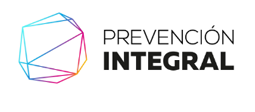In Training We Trust: Reskilling And Digital Transformation
In Training We Trust: Reskilling And Digital Transformation

Embracing digital transformation and the integration of technology into business practices is now every leader’s responsibility, regardless of job function or industry. The pandemic was the tipping point for digital transformation, accelerating companies’ adoption of digital technologies by three to four years and the share of digital or digitally enabled products in their portfolios by a full seven years. For example, 52% of respondents to a PwC survey accelerated their artificial intelligence adoption plans in response to Covid-19. As a result, the global digital transformation market is projected to grow to $2.8 trillion by 2025.
Upskilling And Training
To keep pace, organizations must ramp up investment in another critical area: upskilling their employees. As the use of advanced technologies becomes pervasive, more employees will need to understand how and why these new technologies deliver value. In fact, in many cases, they may need to work collaboratively with machines or complex software in a hybrid operating model.
This will require not only new skills but also entirely new ways of thinking about work—which does not always come easily to either employees or their organizations. A 2019 McKinsey study found that 87% of executives and managers either said they currently faced skill gaps within their organization or expected gaps to develop within the next five years. Only one-third said their companies were prepared to cope with workforce disruptions resulting from technology or marketplace trends. Some of these gaps can be filled by new hiring—respondents to the McKinsey survey cited reskilling programs as the most effective way to close skill gaps—but not all.
In order to succeed in a business environment characterized by ongoing technical disruption and cutthroat competition, leaders must empower their people to develop a diverse skillset that includes ways of working, business acumen and interpersonal “power skills” like collaborative leadership and communication. Cultivating such well-rounded employees requires a more than passing commitment to training and upskilling. Research conducted by my own company indicates that promoting a culture of continuous learning is one of the practices that differentiates high-performing companies. 72% of the front-runner organizations we surveyed do this, compared to 51% of all organizations.
As you revamp your organization’s training and development program, here are three considerations to keep in mind:
1. Focus on the future.
Start by identifying the critical skills your organization will need going forward to achieve your strategic goals. In hockey parlance, this is known as “skating to where the puck is going to be.” Then, map these skill sets onto your existing employee base to identify specific individuals and the types of training required to close any skill gaps. This strategic assessment may also identify additional hiring needs.
Remember, meeting the challenges of the new digital age will require more than just technical skills. The reskilling programs noted in the McKinsey study focus on building employees’ skills not only in advanced data analytics but also in critical thinking, decision making and managing others. Our own research identified the top five skills required of project managers as relationship building, collaborative leadership, strategic thinking, creative problem solving and commercial awareness. In other words, employees need a combination of business acumen and power skills to respond to change and drive positive outcomes.
2. Walk the talk.
Launching a strategic training program is a significant undertaking. It requires consistent funding, meaningful executive support and a commitment to carve out time for employees to take the necessary courses. The latter is particularly important. According to the McKinsey survey, the most frequently cited challenge in reskilling programs is balancing the programs’ needs with current business operations. At our organization, we have designated “No-Meeting Tuesday Mornings” and encourage our people to invest that time in their professional development. We also provide coaching services to our employees when they are promoted into new leadership roles. Team-based training—which 59% of front-runner organizations and just 37% of all organizations practice—is another way to imbue training into your company’s culture and ways of working.
3. Stay agile.
Enterprise agility is the ability to move fast, adapt and pivot through uncertainty and change. As the skill set required of employees continues to evolve, it’s important to have an agile approach to training as well. Our research found that 61% of front-runner organizations use technology to facilitate agile, innovative, continuous learning, and nearly half (45%) provide on-demand, micro-learning opportunities. McKinsey notes that reskilling programs are often more successful at organizations with fewer than 1,000 employees than at larger ones, because smaller organizations are able to adapt and change more quickly and with fewer approval layers. But there’s no reason large organizations can’t adopt more agile business practices in their training efforts.
Final Thoughts
As digital technologies become increasingly ingrained in our day-to-day work, business leaders must think ahead to make sure employees are prepared to navigate, and even embrace, change. By making training, upskilling and reskilling a priority, you ensure that your organization will remain competitive and continue to deliver on outcomes; and just as importantly, you assure your employees that you are invested in their professional development. Nearly seven in ten McKinsey study respondents who are engaged in reskilling say the programs’ impact on business has been greater or equal to the investment. Respondents who have reskilled are also twice as likely as other respondents to say their organizations are prepared for potential role disruptions. In today’s uncertain business environment, in which attracting and retaining top talent is mission-critical, that’s money in the bank.








